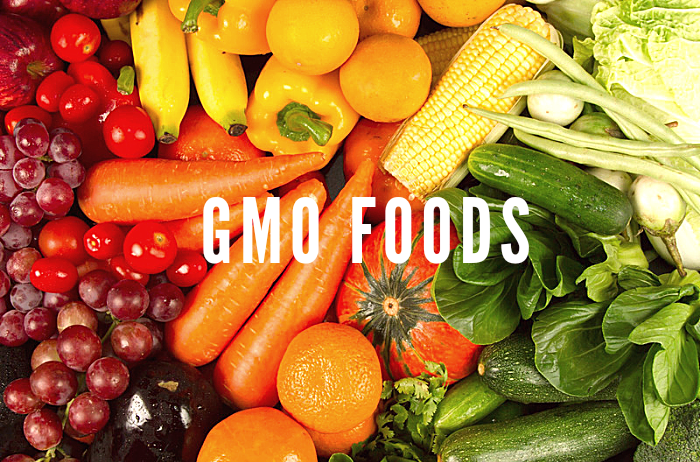This article elaborates on the problem with GMOs where sufficient light will be thrown on what GMOs are, their advantages and disadvantages, and an insight on how to identify GMO foods.
It is no more news that GMO foods are in wide circulation today. While, we may believe newer research work informs that it’s safe for consumption, we must never be too careful when our health is involved.
They have been concerns about the side effects and impacts of GMO foods.
Infact, it has become critical to examine closely the true extent of the problem with GMOs. Both on the possibility of harm to our health and of the harm to our environment.
Without further ado, the acronym GMOs, is short for “genetically modified organisms,” and have been subject to lots of controversy.
In the U.S. Over 90% of all maize (corn), cotton, and soy are grown with GMO seeds. Which means that most of the foods consumed likely contains GMOs.
What are GMOs?
“GMO,” simply mean an organism whose DNA has been modified through genetic engineering technology (GEM).
Genetically modified organisms (GMOs) cut across plants, animals or microorganisms in which the original genetic material (DNA) has been altered in a way that is not naturally occurring but artificially to achieve a certain goal.
Though, where crops and food in general is concerned.
Scientists have modified GMO genes most usually to achieve more positive results and more specifically desired traits.
Such as in areas like growth, sustainability, nutritional content, pest and disease resistance, etc.
While GMO crops may have its advantages like making farming easier, yet, how safe is it really?
Advantages of GMO foods

The following are scientifically proven and majorly acceptable advantages of GMO foods to the grower and consumer.
Modifications for protection against pests and diseases variances or predominance.
They also help lower the costs for growing crops for farmers therefore allowing a greater crop yield even in harsh conditions.
They can cause increase in the nutritional value of foods. A good example is found with rice high in beta carotene, often called golden rice, was modified to help prevent blindness in regions where local diets were chronically deficient in vitamin A.
Six Problem with GMOs
Though GMOs have its pros as identified above, it also have it cons. Let’s consider some of them below.

1. Toxicity
One of the inherent problem with GMOs is that they are unstable. By that we mean – Each insertion of a novel gene, and the accompanying “cassette” of promoters, antibiotic marker systems and vectors, is random
2. Allergies from GMOs
Since, genes are model in GMOfoods it creates two separate and potentially serious health risks involving allergenicity.
This is one of the obvious problems with GMOs. Allergens can be transferred from one allergenic known foods to ones that consumers think safe.
Which may trigger an allergic reaction to patients with illnesses such as asthma, blood pressure, liver disease and many more.
3. Antibiotic Resistance
Another hidden problem with GMOs ia their ability to make disease-causing bacteria resistant to current antibiotics leading to consistent spread of infections and diseases in the human population.
4. Loss of Nutrients
The scientists involved specifically warned the agency that the genetic engineering of foods could result in “undesirable alteration in the level of nutrients” of such foods.
They further noted that these nutritional changes “may escape breeders’ attention unless genetically engineered plants are evaluated specifically for these changes.”
5. Cancer growth
GE foods genetically engineered such as with the recombinant Bovine Growth Hormone (rBGH), used to induce dairy cows to produce more milk.
The FDA had assured consumers that the milk was safe at the time.
But, newer researches have shown that the levels of a hormone called insulin-like growth factor-1 (IGF-1) are higher in dairy products from cows treated with rBGH.
Also, more studies further argue that IGF-1 is a core factor in the growth of breast cancer, prostate cancer, and colon cancer.
This is apparently a problem with GMOs that may frustrate the few advantages of GMOs.
6. Environmental Concerns in GMOs
Some of the environmental concerns associated with GMO crops are resistance to herbicides.
This implies that farmers that some herbicides do not harm GE crops but this resistance spills to weeds too, which somehow have overtime developed resistance to these herbicides too.
This has proven to be yet another problem with GMOs. There has also been speculations that pollen in Bt crops could pose negative impact on honeybees, though there is yet to be any solid evidence to support this.
How To Identify GMO Foods
Due to the potential risks that may come with consuming GMO foods some people wish to know how to identify them so they have the willpower to choose if they wish to eat them or not.
Though, this is difficult because most foods are made with ingredients from GMO crops and does not come with any tag or identification medium.
Millions of people eat genetically engineered foods with no prior knowledge.
The U.S. Food and Drug Administration (FDA) does not label these products, and to make matters worse, the agency does not make room for any pre-market safety testing of GE foods.
But sometime in January 2022, the USDA required food manufacturers to label all foods that have been gene-altered.
Presently, even with this directive, GMO foods aren’t outrightly labeled for easy recognition.
Rather, what you should look out for is the term “bioengineered food.” displayed either with the bioengineered food symbol, listed by or on the ingredients, or via a scannable code on the package with directions, such as “Scan here for more information”.
Note, this label is also not mandatory but any food labeled “100% organic” does not contain any GMO ingredients, because U.S. law prohibits this.
While the (EU), insists that foods with more than 0.9% GMO ingredients must list “genetically modified” or “produced from genetically modified [name of food].”
For foods that have no packaging, the above must be listed near the item, such as on the supermarket shelf.
Conclusion
We have in this article outlined the problem with GMOs and how to identify them, including their advantages, disadvantages and impacts on the environment.
It is our recommendation to food agencies, scientists and research as well as bioengineers that more research and safer approaches should be practiced with GE foods.
So as to mitigate and ultimately reduce any potential health risks it may cause consumers o
Although current research suggests that GMO foods are safe for consumption, some people are concerned about their potential health effects. Due to a lack of long-term human studies, more research is needed.
As of 2022, all foods in the United States that contain GMO ingredients must have the term “bioengineered food” somewhere on the packaging or a scannable code to show that it has GMO ingredients.
